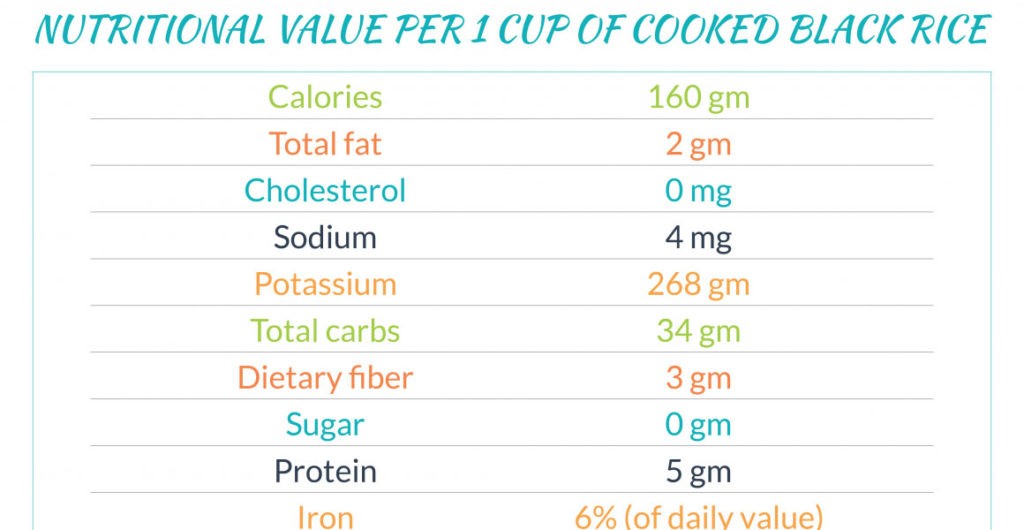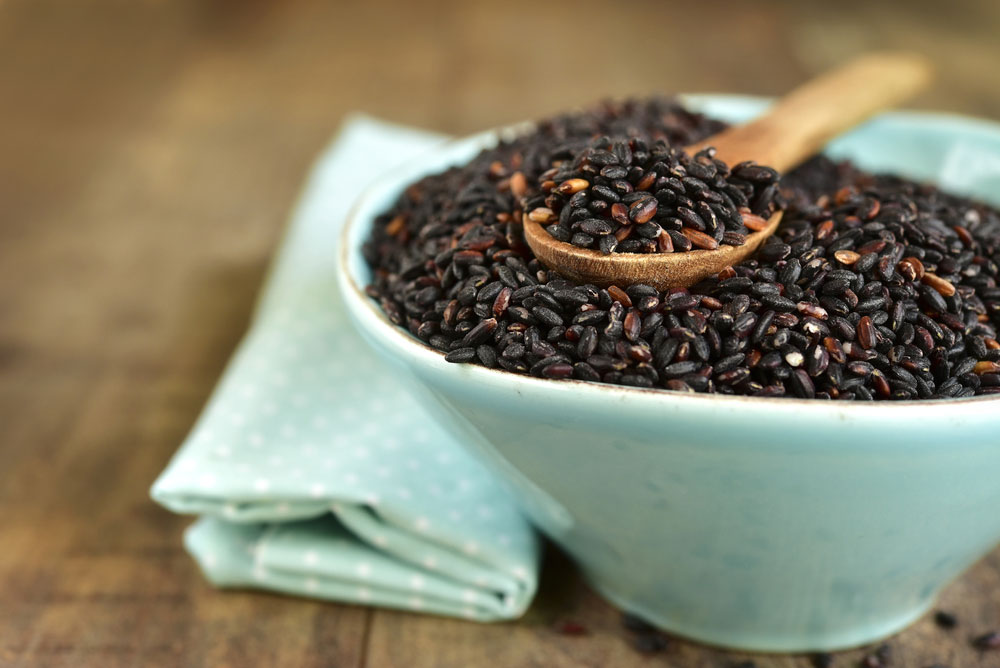If you keep up to date on health trends, you may have noticed how nutritionists recommend switching white rice for healthier alternatives such as quinoa, red rice, and brown rice. As part of these healthier options, nutritionists have also started recommending black rice, also known as the “forbidden rice.”
Its mysterious name originated in ancient China, where black rice was forbidden to the masses and exclusively cultivated and reserved for the aristocracy who consumed it believing it would improve the health of their kidneys, stomach, and liver.
Most commonly grown in Asian regions such as China, Japan, Korea, Myanmar, and North East India, black rice – a whole grain – has been gaining popularity around the world for its high levels of antioxidants and impressive nutritional value. In fact, its color comes from its high content of anthocyanins – a family of antioxidants also found in blueberries. Turns out the ancient Chinese were not wrong about its positive health effects!
Not only is the Forbidden Rice the type of rice that is richest in antioxidants, but it also boasts anti-inflammatory properties, is high in dietary fiber, and can help stop the development of cancer, diabetes, and heart disease, as well as to manage weight. Since it isn’t refined or processed, it can retain its nutritional value.
Five of the main benefits of black rice:
Powerful antioxidant
The bran and hull of the rice contain high amounts – higher than any other grain – of anthocyanin, which according to scientific studies can help protect against cancer that can be caused by free radical damage, reduce inflammation, boost immunity, prevent heart disease, improve brain function, support eye health, and more.
Prevents diabetes
Consuming whole grains is one way to help ward off the risk of diabetes. The fiber content of black rice helps slow down the absorption of sugar (glucose) in the body, thereby maintaining consistent sugar levels, preventing insulin resistance, and lowering the risk of diabetes.

Supports heart health
The antioxidants found in this rice help prevent heart disease by reducing both LDL (“bad”) cholesterol and total cholesterol levels. According to DK’s “Healing Foods: Eat Your Way to a Healthier Life” black rice is proven to also reduce the risk of atherosclerosis (hardening of the arteries).
Improves digestive health
The fiber in black rice contributes to regular bowel function and helps prevent digestive issues such as bloating and constipation. On the other hand, as it adds bulk to your stool, it can also help improve diarrhea.
Helps manage weight
Full of fiber, black rice leaves you feeling full and prevents overeating. Its ability to help prevent insulin resistance – linked to the risk of developing diabetes and obesity – further supports maintaining a healthy weight.
Note how, except for iron, black rice is nutritionally superior to the other types of rice:
Protein, iron, and fiber per 100 grams serving of white, brown, red, and black rice

Try to make black rice the main source of healthy carbs in your diet and benefit from the ample health benefits it offers.

